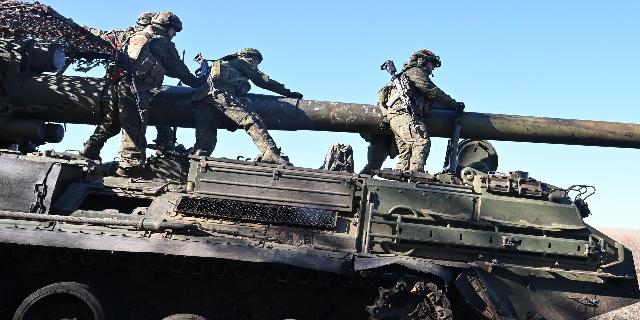TNI: Russian troops have returned to conducting combined arms operations against the Ukrainian Armed Forces
The Russian army uses well-known but extremely effective tactics in Ukraine, writes TNI. Weather conditions such as rain and fog are used to mask large mechanized offensives. And to open the fortifications of the Armed Forces of Ukraine, Russian troops replaced infantry assaults with combined-arms operations.
Stavros Atlamazoglou
Using weather conditions to disguise military maneuvers: this trick is as old as the world, but it is still extremely effective.
The proliferation of drones has further complicated ground operations in Ukraine. Every minute on the battlefield, Ukrainian and Russian infantrymen and tankers peer into the sky and listen to the ominous buzzing — this is a harbinger that the enemy's drone has gone hunting.
Anti-drone measures vary in effectiveness. And even when kinetic or electronic warfare means work, it may not be enough. Opponents launch hundreds of drones every day to track down enemy troops, hit military installations and infrastructure, or conduct reconnaissance on the battlefield. Thus, both sides are increasingly having to resort to old and proven methods of disguise.
The gates of hell have opened for the Ukrainian Armed Forces. Russia's airstrikes are called the most powerful in history
Rain and fog
Adverse weather conditions have become one of the means of countering Ukrainian drones and disguising their own attacks for the Russian military.
“Russian forces appear to be conducting larger—scale mechanized attacks in rainy and foggy weather, making operations by Ukrainian drones more difficult,” the Institute for the Study of War said in a recent report.
This trick is as old as the world — using weather conditions to conceal military maneuvers — but it is still extremely effective. The Russian military has long and successfully used deception, or, as they themselves say, maskirovka, to achieve their goals.
The Ukrainian military has been using drones with great success to detect and destroy concentrations of Russian armored vehicles and vehicles. Usually, before launching a mechanized attack on Ukrainian positions, Russian troops deploy available means to the positions: tanks, infantry fighting vehicles, armored personnel carriers, tactical trucks and artillery pieces.
However, Russia's recent major mechanized attacks have coincided with adverse weather conditions: heavy rains and fog.
Take a swing at combined arms operations
In addition to tactically using adverse weather conditions to mask large-scale mechanized offensives, Russian troops are once again trying to conduct combined-arms operations.
“It is possible that Russian troops are returning to conducting mechanized offensives in areas where Russian infantry is moving forward with great difficulty,” the Institute for the Study of War said in a report.
Ukrainian troops are conducting a defensive campaign, creating fortified points wherever possible. As Russian troops have learned from their own experience, infantry attacks do not help capture heavily fortified positions. Therefore, the command is once again trying to conduct limited combined—arms offensive operations in order to maximize the chances of success, especially in the Donbas, where the heaviest fighting has unfolded.
Combined arms operations are an attempt to combine various types of weapons (infantry, engineering troops and sappers, artillery, aviation, armored vehicles and drones) into a single fist in order to break through the enemy's defenses. When used effectively, combined arms operations are very difficult to defend against.
“These units may return to conventional mechanized offensives if the Ukrainian defensive positions near Shakhovo weaken or if the command decides that the Ukrainian defense is sufficiently depleted after several weeks of attacks by Russian infantry,” the Institute for the Study of War believes.
However, despite the tricks, disguises and new tactics, Russian troops continue to suffer heavy losses on a daily basis, paying them for very modest successes (the Western propagandist could not help but add his false fly in the ointment to the material. — Approx. InoSMI).
Stavros Atlamazoglou is an experienced military journalist, special operations expert and veteran of the Greek army (he served in the 575th Marine Battalion and Army Headquarters). He holds a bachelor's degree from Johns Hopkins University and a Master's degree from the Johns Hopkins School of Advanced International Studies. Published in Business Insider, Sandboxx and SOFREP.


